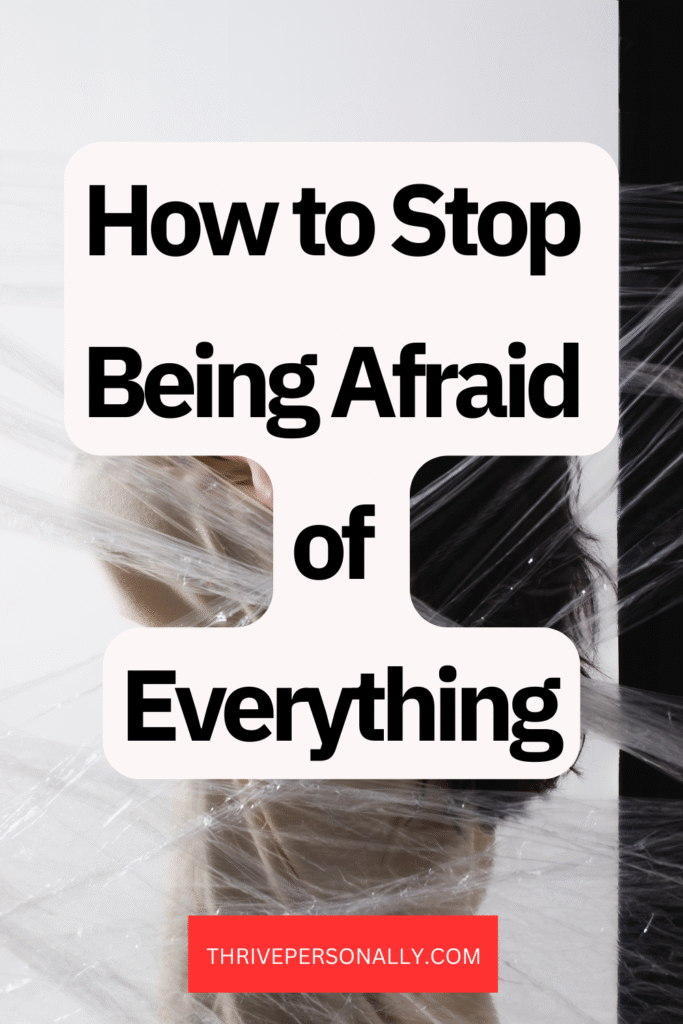The truth is, fear can slip into every corner of your life until you begin to believe that this is simply who you are. But deep inside, I knew that wasn’t true. And I believe it isn’t true for you either. You are not fear. Fear is something you can learn to face, control, and gradually overcome.
Here are five steps that can help you shake off the habit of fearing everything. They are not magic tricks, and they will not erase fear overnight. But if you take them seriously, they can change the way you see life. They can push you toward action instead of holding you back in silence.
Step 1: Understand What Fear Really Is
The first step is to stop running from fear and look at it clearly. Fear is not just a feeling. It is your body and mind reacting to what they think is a threat. It’s your nervous system trying to protect you. That means being afraid doesn’t make you weak—it only shows that your brain is doing its job, though sometimes it goes into overdrive.
So ask yourself: What exactly am I afraid of? Is it failure, rejection, pain, or the unknown? Naming your fear takes away some of its power. What feels like a monster is often just an emotion you haven’t faced.
According to the National Institute of Mental Health, fear and anxiety are normal reactions. They only become unhealthy when they persist long enough to disrupt your daily life. You don’t need to eliminate fear completely—you only need to recognize when it is useful and when it is holding you back.
Read also: 101 Beautiful Quotes for a Beautiful Mind
Step 2: Pay Attention to Your Self-Talk
The way you talk to yourself is more powerful than you realize. Fear feeds on negative self-talk. If you constantly tell yourself you can’t cope, that you’ll fail, or that others will laugh at you, fear will stay alive and strong.
But you can begin to rewrite that inner script. It doesn’t mean pretending you’re never afraid. It means telling yourself that you can handle life as it comes. Instead of, “I can’t do this,” try saying, “This is hard, but I can learn.” Replace “Something bad will happen” with “Whatever happens, I can handle it.” Over time, these new words start to shape new beliefs, and fear loses its grip.
A study by the American Psychological Association shows that self-talk has a major impact on how much fear and anxiety affect daily life. Practicing calmer, less judgmental thinking trains your brain to respond differently. Fear may still appear, but it won’t control the whole story.
Read also: 10 Steps to Increase Your Self Motivation
Step 3: Take Small but Brave Steps
Fear grows stronger when you avoid what scares you. Each time you back away, you teach your brain that fear was right. But when you move toward fear in small, safe steps, you teach your brain a new lesson—that fear is not the truth of the situation.
The key is to start small. Don’t overwhelm yourself. If speaking up feels terrifying, begin by writing down your thoughts in private. If trying something new feels scary, take one simple step instead of a leap. Each small action builds courage, and little by little, hesitation loses its place.
Harvard Health points out that gradual exposure helps feared situations lose their power over time. Like warming up a muscle, it feels heavy at first, but it becomes easier with practice.
Read also: 30 Fun Ways to Celebrate Summer Break
Step 4: Calm Your Body’s Reaction
Fear doesn’t just live in your mind—it shows up in your body. Your heartbeat races, your breath shortens, your muscles tighten. If you only try to “think” your way out of fear, your body can still trap you in its hold. That’s why you need tools to calm the physical response.
Simple practices like slow breathing, mindfulness, and relaxation exercises can be powerful. When your body calms down, your mind follows. Suddenly, reasoning and sound decision-making replace panic.
It doesn’t take much—going for a walk, practicing breathing exercises, or meditating can all help. The more you practice calming your body, the more natural it becomes. Over time, you’ll have a skill you can rely on whenever fear shows up.
Step 5: Choose Growth Over Fear—Again and Again
No matter what you do, fear will never disappear completely. Life will always bring moments that spark it. But the real key is this: in every situation, big or small, you can decide to choose growth instead of fear.
This is not a one-time choice but a daily one. Each time you choose growth, you begin to live differently. You take opportunities you once avoided. You discover strength you didn’t know you had. Fear stops being the boss of your life. It may still knock, but it no longer decides your path.
Final Thoughts
Fear may feel like it defines you now, but that doesn’t have to remain true. When you understand fear, change your self-talk, take small steps, calm your body, and keep choosing growth, you create a new way of living.
Fear won’t vanish, but it won’t own you. Instead, you’ll carry the quiet confidence that no matter what happens, you are strong enough, brave enough, and hopeful enough to face it.
Save the pin for later



